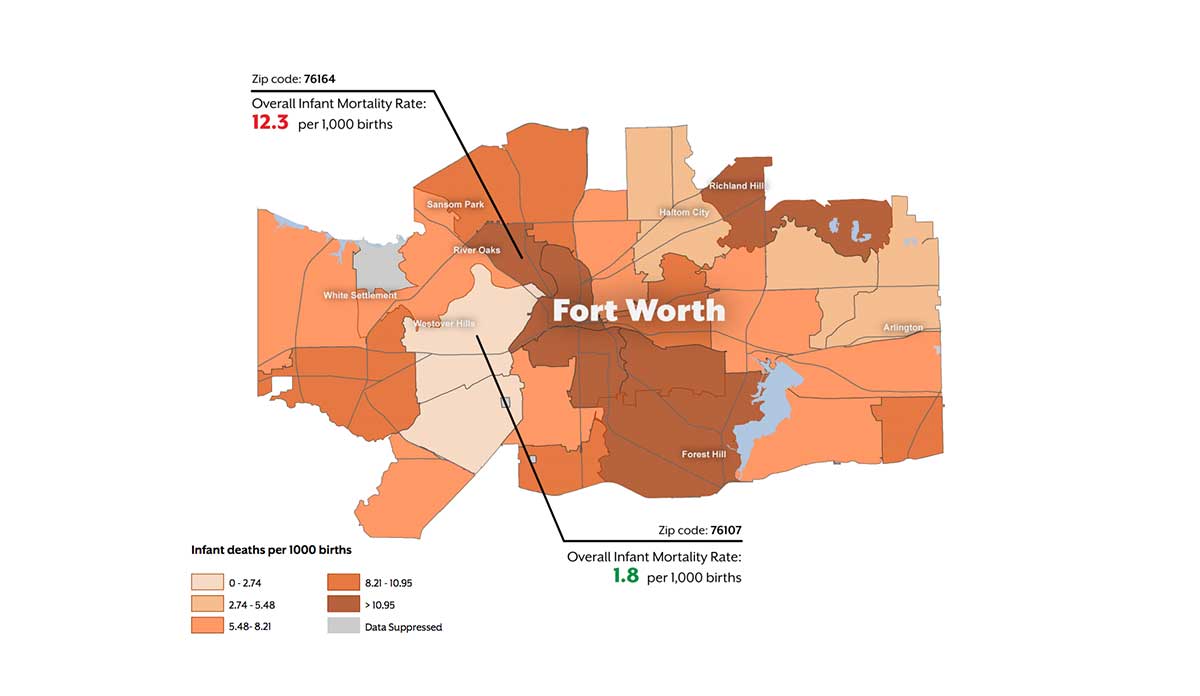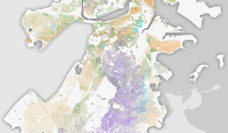Last year, Texas made headlines as having the highest maternal mortality rate in both the U.S. and among industrialized countries. Texas does considerably better in terms of infant mortality. The infant mortality rate (IMR) is measured as the number of infant deaths before the age of one per 1,000 births. At 5.7 infant deaths per 1,000 births, Texas has the 19th lowest IMR in the country. However, a new report from the University of Texas System Population Health shows considerable variation in infant deaths based on zip code.
Using data from the Texas Vital Statistics Linked Birth and Death Records from 2011-2014, the map above shows IMR by zip code within the city of Fort Worth. The disparities are stark. In the 76107 zip code, 1.8/1,000 infants died before the age. But, in the adjacent 76164 zip code, IMR is almost 600% higher at 12.3 /1,000.
Of particular interest is the finding that disparities do not break down simply by race and ethnicity. IMR varied for Hispanic, white, and black mothers across zip codes. All groups lived in zip codes with no or close to no infant deaths before age one. All groups also lived in zip codes with IMRs greater than 10 per 1,000 births. Black mothers had both the highest overall IMR at 9.99 and greatest variation across zip codes. Black mothers lived in zip codes where IMR ranged from 0 to 28 and were the only group to live in zip codes with IMR over 20.
The researchers call for further research into social and economic factors within each zip code that contribute to infant death. A key takeaway from this study is that local data can add invaluable insight to health disparities that might be lost with state or federal level data.
Databyte via Infant Mortality in Communities Across Texas: Data Brief. The University of Texas System Office of Health Affairs.













